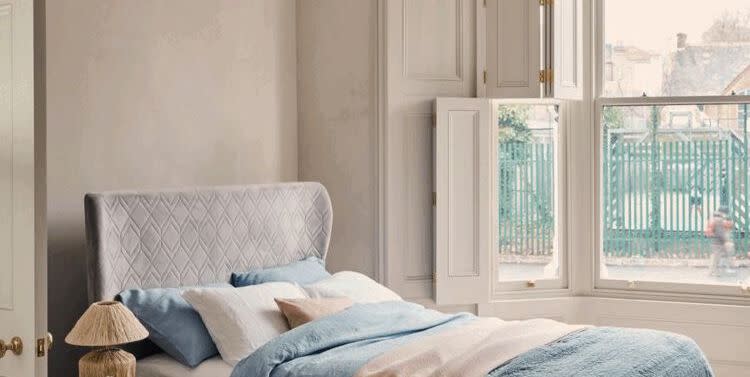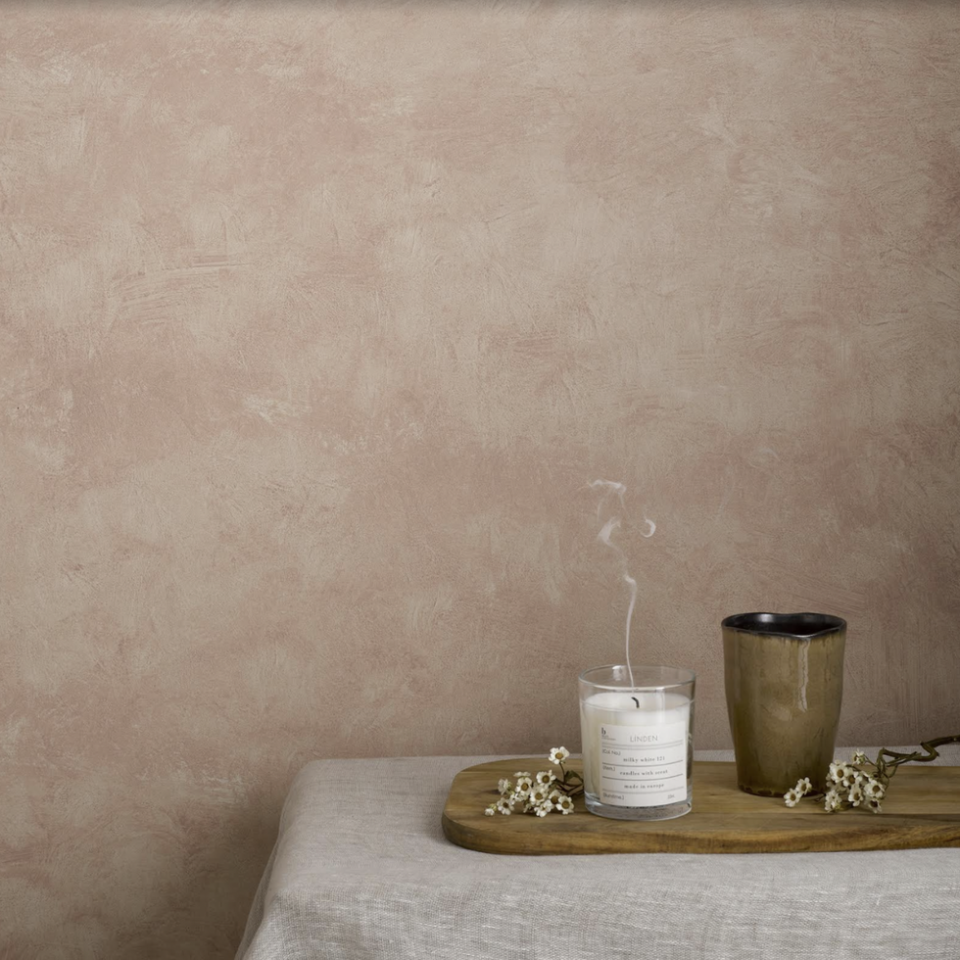How to recreate the limewash wall trend for less than £10

Limewash walls is the new paint trend populating social media feeds, and for good reason. With its chalky texture, it softens standard paint colours, providing a finish which is considerably warmer and more natural. Mixing your own limewash using chalk-based paint and water is the super-effective and budget-friendly way to achieve the limewash look.
According to B&Q, limewash paint is surging in popularity, with more households looking for ways to add character to their walls.
What are limewash walls?
'The traditional roman limewash effect is created using limestone that has been crushed, burned and mixed with water to create a chalky textured paint,' says Susie Spence, Category Director, Surface and Décor at B&Q.
The crushed limestone was mixed with natural pigments to create the desired colour. Today, an earthy pink limewash is one of the most popular colour options, along with sage green – especially in bathrooms – and a warm putty. Real limewash paint becomes much lighter as it dries – it is considerably darker when wet, and will usually be totally unrecognisable compared to the finished product. It is also naturally antibacterial, mould-resistant and usually free of the type of solvents that can make some paints quite toxic.

Real limewash paint becomes much lighter as it dries – it is considerably darker when wet, and will usually be totally unrecognisable compared to the finished product. It is also naturally antibacterial, mould-resistant and usually free of the type of solvents that can make some paints quite toxic.
Where to use limewash in your home:
Limewash is pretty adaptable in the home. Unlike traditional paint that sits on top of your walls like a veneer, limewash will sink in, so it works well on porous surfaces like brick and plaster.
In design terms, those rooms that need a considerable amount of warming, like a bathroom or an overly-clinical kitchen would do well with limewash walls, or in large spaces that run the risk of looking quite sparse. It's also a great choice for bedrooms because its chalky texture will soften underlying colour and create something quite cocooning.
The downside to real limewash, however, is that it can become quite costly.
'It can become quite expensive at £60+ per tin if bought pre-made,' says Susie. 'This DIY method is a more affordable way to create the effect at home for less. The effect can add a contemporary aspect to any room and can be a great way to elevate neutral decor.'
How to recreate limewash walls for less:
1. Pick the right paint
One of the massive benefits of the limewash DIY wall trend is that it doesn't cost the earth. On TikTok, @chrystalspalace used Matt Emulsion paint tester pots from B&Q in the shade Tijuana — which is priced at just £2. You can either use just one colour or mix them together. Since water is added to the paint, you don't have to fork out hundreds on high-end colours.
'The trend consists of softly applying chalk-based paint to create a textured wall effect and is praised for its natural characteristics,' say B&Q.
2. Create the mixture
Now it's time to create the mixture. To do this, mix the paint with water to create a chalky effect. Make sure you follow the ratio of 70 per cent water to 30 per cent paint to form a watery consistency.
3. Apply to your walls
Limewash requires a little more effort than rolling on a can of paint. Using a lint-free cloth or old rag, start by applying the mixture to your wall in circular motions. Continue until the desired wall is evenly coated and leave to dry.
There's so much more you can do with your walls than simply painting them a standard white finish, so why not give this trending effect a go?
Take a look at @chrystalspalace's video below:
Follow House Beautiful on TikTok and Instagram.
You Might Also Like

 Yahoo Finance
Yahoo Finance 
